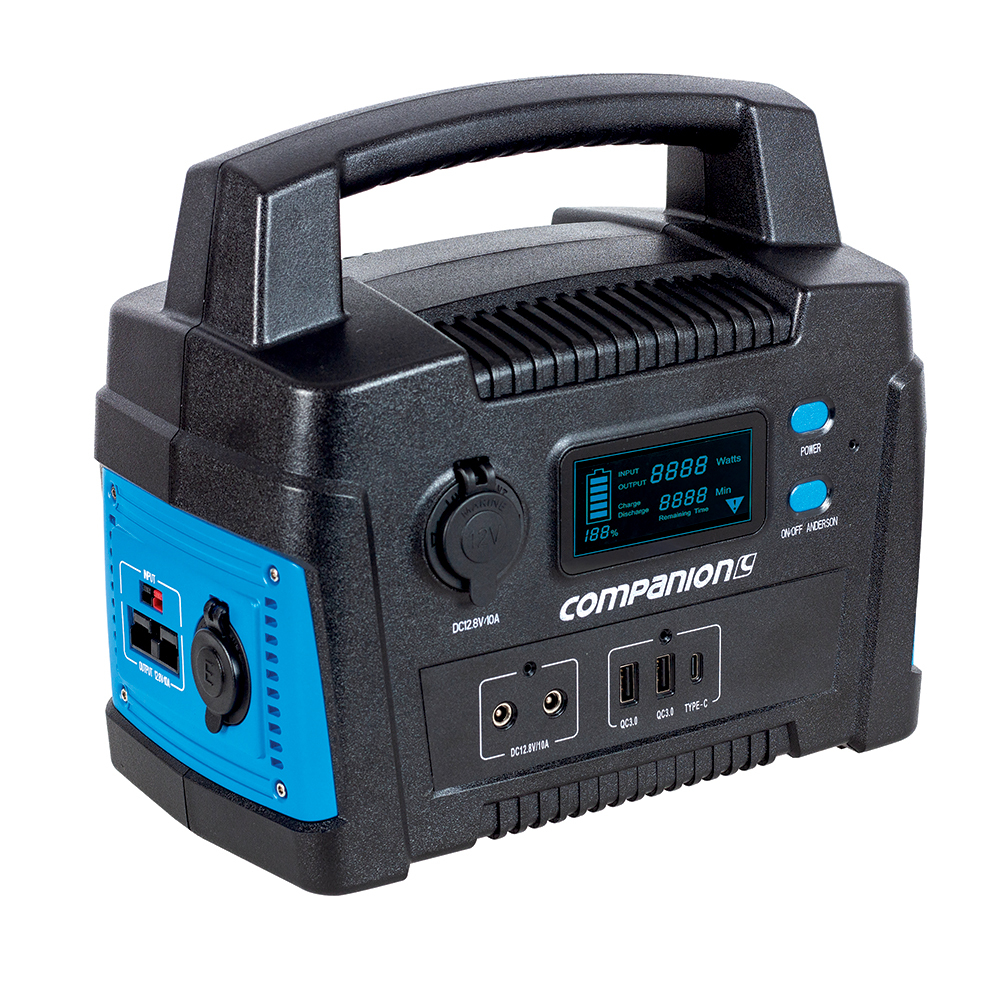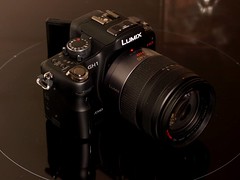It is now easier than ever to have power available for your devices on location or if you are camping remotely.
For most people, a system based on a LiFePO4 lithium battery will be the easiest, lightest (around half the weight), charge 3-4x faster, more stable voltage outputs when discharged to lower levels and are least expensive option in the long term as these batteries have 5-10x more recharge cycles and are able to go down to much lower levels without harm to the battery than much heavier lead acid based batteries.
Lead acid cranking batteries are designed to be fully charged most of the time and to run at high under-bonnet temperatures and if allowed to run flat will dramatically shorten their life span.
Deep cycle lead acid batteries are designed to regular discharge to around 50% but are not designed for cranking. These were the traditional “second battery” option but are not being superceded by LiFePO4 batteries for this purpose.
LiFePO4 batteries do not tolerate high temperatures over 50degC (thus not suitable for use under the bonnet), nor sub-zero temperatures and generally do not like to be continuously trickle charged but allow much better life spans when regularly discharged deeply (5-10x the recycles of a lead acid battery).
How much battery storage will you need?
Most campers will want around 100-120Ah LiFePO4 battery as a nice compromise for weight, price and capacity. These batteries weigh 10-14kg depending on model and quality and a good one can be had for around $AU750-1000.
Take care purchasing cheap LiFePO4 batteries as they may have quality and longevity issues, lack of water/dust sealing, as well as requiring brand-specific chargers and may not be able to be used in parallel configuration with other batteries (although most people will not need this).
Suggested batteries in Australia:
- iTech120X 120AH LiFePO4 battery – water/dust sealed, only 12kg
- Pure Energy LiFePO4 12V/100Ah
Perhaps the best way to understand this is to convert everything into Watts and Watt-hours rather than Amps and Amp-hours as the latter are dependent upon the voltage of the system.
No of Watts power usage = Amps per hour x Voltage
No of Watt-hour capacity = Amp-Hours capacity x Voltage
Thus to calculate how much capacity you need in a 12V battery you will need to determine:
- how much you want the battery to get exhausted to before re-charging (with lead acid batteries this is probably around 50% of capacity, but with LiFePO4 batteries you may accept something like 20% of capacity)
- how often and how much you can re-charge the battery (see below)
- the total number of watt-hours your devices will use in that period between recharges
Some examples of use needs:
A modern 36L car fridge such as a Dometic Waeco CFX3 35 which is full of items already at 4degC and with lid closed properly and minimal lid opening times will generally run at 12W or so (1amp per hour at 12V).
Thus to run such a fridge, you need 24 amp-hours a day or around 288 watt-hours, and thus a 100 amp-hour LiFePO4 12V battery should last you a few days without re-charging.
If you need to run a 240V AC sine wave inverter to power a device, use the watts (a laptop or a single electric blanket may run at around 65W on AC) and then covert to amp-hours at 12V by dividing the watts x hours of use by 12V.
What about power banks for smartphones?
These are very handy devices and they are much smaller than 12V car batteries, but they are 5V systems so to compare with a 12V battery, their amp-hour capacity of these should be converted to watt-hours.
In addition, they usually have a maximum output of 2.1A at 5V USB (10.5W).
Portable power banks for smartphones are often rated at 10000 or more milliAmp-hours capacity or 10Ah at 5V which would give 50 Watt-hours capacity. The equivalent power capacity in a 12V battery would be a 4Ah 12V battery.
Furthermore, many of the capacity ratings on these power banks are erroneous and misleading and often stated as “theoretical capacity”.
Some however, are designed for use as a cranking battery for starting a car and come with clamps to do so which can be very handy indeed!
The battery box:
A battery box is a very useful housing for your battery as it not only protects it from damage which may cause it to explode, and minimises chances of its terminals being short-circuited, but it allows for convenient charging inputs and power outlets such as cigarette lighter and USB outputs, as well as providing an indicator of the current voltage of the battery which is a very approximate indicator of capacity remaining.
Most battery boxes come with bi-directional 50A Anderson plugs.
Some come with 175A Anderson plugs for starting your car HOWEVER, these will NOT work with LiFePO4 batteries or Deep Cycle lead acid batteries – neither of which are designed for use as cranking batteries!
Make sure it is well built with ergonomic and strong handles.
Examples include:
- HardKorr Heavy Duty Battery Box
- Engel Smart Battery Box Series 2
- ArkPak 730P

But what about all-in-one Power Stations?
A “Power station” is a very convenient option as it houses the battery, the charger, the outputs and inputs and often includes a built-in AC sine wave inverter and AC 240V outlets.
The most common problem with these are that the battery is often only around 25-50Ah and the chargers tend to be lowly rated around 5A which will mean it will take overnight to charge it on AC power and there may be no option for faster charging when you need it.
Examples include:
- Companion Rover lithium 40AH Power Station
- Hyundai 1000W / 2000W max LiFePO4 Lithium Power Station AC/DC
- Sunovo SPS500

How do I know how much battery charge is left?
This is referred to as State of Charge or SOC.
The default method is by looking at the battery voltage and making a very rough guess – unfortunately, a small change of 0.1V may equate to a large change in battery charge of perhaps up to 20-30%.
For instance, for a 12V LiFePO4 battery, 13.4V may equal 99% charge, 13.3V = 90%, 13.2V = 70%, 13.1V = 40%, 13V = 30%, 12.9V = 20%, 12V = 9%
Note that you can buy in-line power usage meters with Anderson plugs on either side (eg. this 200A one) which are very useful for assessing load draw from your devices or the amount of solar charging and whilst they do display Ah, this is the total current that has passed through the unit since connected, this is NOT the residual battery capacity and they do not measure SOC!
The more accurate method is to purchase a battery capacity meter (aka coulombmeter) which connects to a shunt device which is inserted into the positive feed from the battery terminal, but most people forego the hastle of wiring these up.
How to charge your system
240V AC power battery charging:
The most basic way to charge your LiFePO4 battery is via connection to a Lithium-capable AC charger such as a Victron IP65 15A charger.
This needs connection to a standard 240V 10A power supply (12V 15A is only 180W and thus only 0.75A on 240V power supply – this is why I suggest converting amps to watts to understand what is happening better with different voltage components) and at 15A output will take a couple of hours charging per day to cover a day’s worth of fridge use (as outlined above).
The Victron 15A charger can be set to low current mode of 4A if you become desperate and wanted to charge it via a cigarette lighter AC inverter. Car cigarette lighters are 12V and limited to 10A or 120W and thus trying to run a 15A (ie. 180W) charger will blow the fuse, hence the need to place it into 4A low current mode before connecting it.
You can buy 25A chargers to charge more rapidly but these are bigger, heavier and more expensive.
Whilst you can also use a petrol generator to output power for these chargers, these are unpopular in camp grounds and banned in many camp grounds especially those with large numbers of campers.
If you have installed an Anderson plug on the outside of your car and you can connect the internal connection to your battery, then you can charge your battery via your AC charger through this plug without need to run a cable through a window and risk rain coming inside the car.
In car, DC-DC charging via the car’s alternator:
1 hour driving with a 25A DC-DC charger will thus provide for around 1 day of fridge time (as outlined above).
This requires wiring your car up to enable a “dual-battery” system which adds cost but the benefits are enormous – you can charge your battery at 25A or even 40A depending upon the DC-DC charger you buy, and some of these chargers also can connect to solar panels to preferentially take current for the solar panel instead of the car alternator.
You cannot just connect your LiFePO4 battery to your cranking battery, as a minimum you need:
- a 40A or larger fuse on the positive wire near your cranking battery in case of short circuit
- a 40A or larger fuse on the positive wire between the LiFePO4 battery and the DC-DC charger and near as possible to your LiFePO4 battery in case of short circuit
- appropriate sized wiring 6B&S or smaller 8B&S grade wiring from the cranking battery terminals to your DC-DC charger and then to your LiFePO4 battery, all carefully joined and protected from damage
- DC-DC charger situated close to the LiFePO4 battery and which prevents the cranking battery from being drained when the car is not running and which can handle a variable voltage input, and output it at higher voltages above 14V in order to adequately charge these batteries – an example is the RedArc BCDC1225D 25A DC-DC and solar MPPT charger.
- for cars manufactured after 2006 which have variable voltage alternators to save fuel, you will also need to connect the charger to an ignition wire
- the black negative wires may need grounding by connecting to the car chassis
- for ease of use, most people will join all the power wires by utilising 50A Anderson plugs
- optionally, if using the above Redarc charger, it’s yellow cable can be connected to the +ve on an externally mounted Anderson plug so that you can directly plug in a solar feed to the charger.
Solar panels and solar blankets:
Most people probably don’t need a solar solution if they have a DC-DC charger installed and they are not planning on camping for days on end without driving the car.
The latest solar solutions are much lighter and smaller, and one should look for panels which are waterproof, durable and have blocking diodes so that partial shade on the panels does not stop the total current outputs.
If you have a DC-DC charger with solar regulator in-built such as the Redarc above, you must not use another solar regular in the same system even if one is supplied with the panel or blanket.
If you are going to directly charge your LiFePO4 battery make sure you use a solar regulator capable of charging lithium batteries (preferably a more efficient MPPT regulator rather than the older PWM regulators).
Solar panels output higher voltages than 12V, usually to around 22-24V. You will need to check the maximum output voltage as solar regulators have a maximum solar voltage they can take (the Redarc has a maximum 33V, other DC-DC chargers may have lower voltage limits).
As the solar panels output at higher voltages, a very approximate indicator of how many amps you will get at 12V charging your battery is the wattage rating of the panel in full sun – mostly you will be looking at 150-200W panels.
Examples include:
- iTechWorld 280W solar panel and 3 stage PWM solar regulator compatible with LiFePO4
- HardKorr 200W solar panels with crocskin cell armour
Some blankets can be folded, some ultrathin “panels” can be curved to fit mounting on curved roofs such as the Renogy flexible 175W which can flex to 248deg or the Kings semi-flexible 160W which can flex to 30deg.
Other issues to consider include:
- preventing theft
- preventing damage from people or animals walking on them
- preventing them being blown over in the wind (obviously heavier ones may be better here)
- connecting to your battery – bring your battery outside to charge and risk theft vs having an externally mounted Anderson plug on your vehicle
Highly recommend you install an external Anderson plug on your vehicle
Install one under the rear of your car and have the cable run into the boot of your car where it has another Anderson plug (and preferably you wire it so that the black cable is also grounded to the car chassis).
This allows for a lot of versatility and can be used as either:
- Connecting your solar panels to charge your main battery or your auxiliary battery
- Charging either battery but with an AC battery charger
- Running an Anderson extension cable into your tent and add a cigarette lighter output into your tent so you can run your laptop via USB-C, or charge your smartphones or other devices including USB heating pads or a 12V air heater, or even an AC inverter (just ensure the latter do not create fire risks in the tent)!
To charge your main cranking battery via this Anderson port, ensure the boot Anderson port is plugged into the Anderson port that leads to the main battery – if using solar power you will need to have a solar regulator in the system.
To charge your auxiliary battery via this Anderson port, ensure the boot Anderson plug is plugged into the Auxiliary battery. If using solar and you have a DC-DC charger in the boot which also has solar regulator functionality, then you can plug the boot Anderson plug into the “solar input Anderson plug” of the DC-DC charger.
To use the external Anderson plug to power your devices, ensure the boot Anderson plug connects to the auxiliary battery, preferably with a fuse near the battery.
You may wish to disconnect the boot Anderson plug when not in use to avoid other people hooking up to your car and draining your battery or damaging your system.











